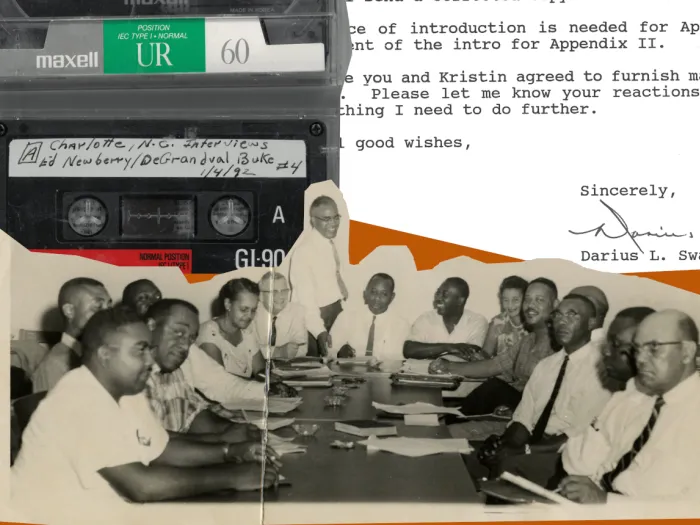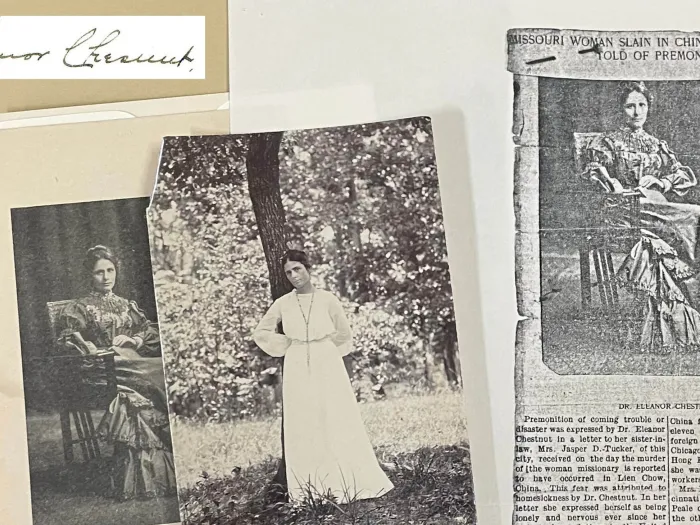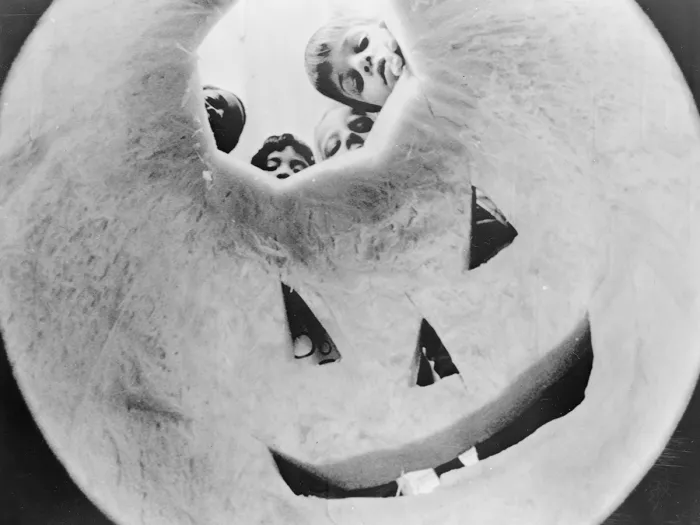The Fundamentals: A Testimony, "Compliments of Two Christian Laymen," n.d. Image No. 4656.
By Kazimierz Bem [1]
--
Thanks to excellent research by Bradley Longfield (and others) the Fundamentalist-Modernist struggle among the Presbyterians is well known. In contrast, the Congregationalists are often portrayed as the more liberal, modernist sister denomination. This overlooks important fundamentalists among the Congregationalists and their considerable involvement in the movement.
Until the mid-nineteenth century American Presbyterians and Congregationalists were very close to one another theologically and ecclesiastically. In 1801 they signed a Plan of Union by which they cooperated in establishing congregations in the American West, and clergymen switched easily between both denominations. But as the century moved on, the two denominations grew apart. The Presbyterians held strictly to the Westminster standards, cherished their Calvinist roots, and acted against some perceived heretics in their midst. The Congregationalists slowly moderated their stern Puritanism, seeking to be both Orthodox and not tied to the formulas and conflicts of the past.[2] Many Presbyterians had moved away from the Plan of Union long before the Congregationalists officially abrogated it in 1852. When the Congregationalists organized their own denomination in 1868, they validated their Presbyterian brethren’s suspicions by refusing to mention the word “Calvinism” in their Burial Hill Declaration.[3] Congregational polity also did not allow for effective heresy hunting, and the harshest censure for church or pastor was to be dismissed from “fellowship.”
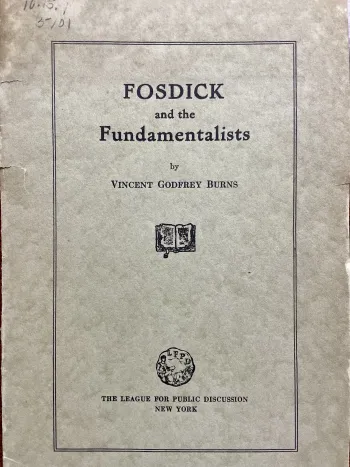
Vincent Godfrey Burns, “Fosdick and the Fundamentalists: A Review of the Great American Controversy in the Protestant Church,” (New York: The League for Public Discussion, n.d.), 13pp.
The Congregational reluctance to expel heretics proved attractive to some Presbyterian clergymen, who toward the end of the nineteenth century started running afoul of their denomination’s theological orthodoxy. While the most famous dissident, Charles Augustus Briggs (1841-1913) went over to the Episcopal Church, others chose Congregationalists. In 1908 Rev. Finis E. Maddox (1860-1939) of First Presbyterian Church in Texarkana, Arkansas, was convicted by the Presbyterian Church in the U.S. Ouachita Presbytery of heresy. He and three-quarters of his congregation gathered a Congregational one and joined that denomination. Free of theological control, he published the sermons that got him into trouble under the telling title, “The Passing of Medievalism in Religion.”[4]
Congregationalist sympathy towards modernism is evident in their main mouthpiece, “The Congregationalist and Advance” newspaper. It published openly modernist theological pieces like the 1919 series by Rev. Frank M. Sheldon, one of which was titled, “The Distortion of the Bible.” In it, he not so subtly mocked fundamentalist reading of the Bible, claiming that even Mormonism could be justified by a fundamentalist reading.[5]
Almost a year to the day before Harry Emerson Fosdick’s famous sermon in May 1922, The Congregationalist and Advance ran the editorial: “Who are the Fundamentalists?” It listed their beliefs as “verbal inspiration and infallibility of the Bible, the substitutionary theory of atonement, the divinity of Christ and other dogmas formulated by older Protestant theologians.” Identifying them as mainly premillennialists, it called them “a menace” and explained their rise by “times when progress seems too rapid.” It asserted that “the rank and file of our people care little for [theological] formulas.” The theme was continued a week later with “What are the fundamentals?” The editorial listed only two: that “God is the father of our Lord Jesus Christ” and that the person, life, death, resurrection, and character of Christ is the second. “Within the limits … there is room for different theories of Atonement or of the inspiration of the Scriptures or of the Future Advent of our Lord.”[6]
It is of little surprise therefore, that when the Fosdick affair broke out, one of his defenders was Vincent Godfrey Burns (1893-1979), a colorful Congregational pastor of South Church in Pittsfield, Massachusetts. He wrote a pamphlet titled “Fosdick and the Fundamentalists” to defend his colleague. “Shall isolated sectarian loyalties and narrow denominational lines be held more important than loyalty to Christ and the broad, universal Church which He founded?” Burns continued, “Why should this august [Presbyterian General] Assembly veil their real purposes of bigoted persecution for heresy under the cloak of denominational custom?"
But Congregationalists were not as firmly pro-Modernist as “The Congregationalist” would have us believe. One of the editors in chief of “The Fundamentals” was Reuben Archer Torrey (1856 – 1928), a Congregationalist pastor in Los Angeles, who helped to establish in 1912 the predecessor of Biola University. A student of Dwight Moody, he remained officially a Congregational pastor, even as his theology grew increasingly fundamentalist and Pentecostal, and he chose to pastor churches that were not a part of the denomination.
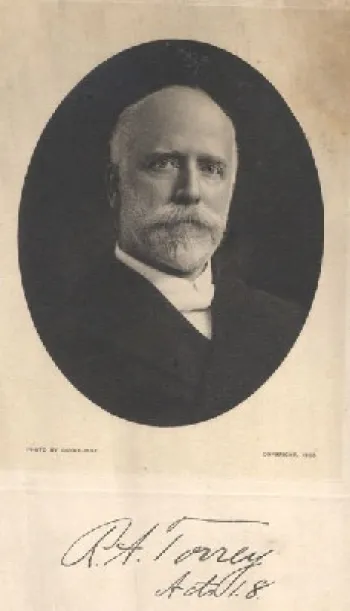
Rev. Reuben Archer Torrey (1856-1928).
He was by no means the only one. When in 1908 the Lone Star Congregational Association accepted the above-mentioned Rev. Maddox and his church, the First Congregational Church in Dallas withdrew from the denomination. Its decision was fully supported by its pastor, Rev. Cyrus I. Scofield (1843-1921), author of the “Scofield Reference Bible,” an ardent premillennialist, and until then a Congregational minister. The rank-and-file readers of “The Congregationalist” were also not all onboard with the newspaper’s stance. In a letter to the editor one of them complained that the articles by Sheldon are “highly destructive of the … faith. Such testimony sorely grieves the hearts of some of your readers.” There were more letters like these. In 1921 the Congregational Home Missions Society warned that many Swedish churches in New England were withdrawing from the denomination because “many of our leaders are tending towards unitarianism” and modernism.
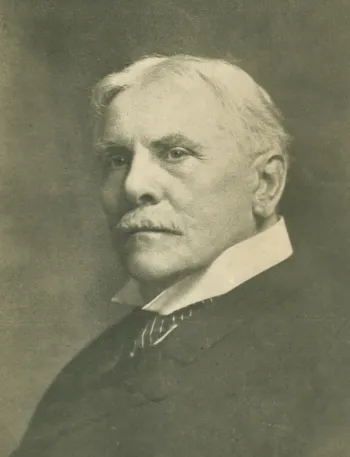
Rev. Cyrus I. Scofield (1843-1921), circa 1920.
While the Congregational leaders and editors of “The Congregationalist” supported the modernists, the fundamentalist and conservative elements within the denomination largely kept quiet. They erupted in the 1930s over the Council for Social Action; and in 1942 another Congregational minister, Rev. Harold Ockenga (1905-1985), a graduate of Westminster Seminary and pastor of Park Street Church in Boston, was instrumental in establishing the National Association of Evangelicals—even while eschewing the term “fundamentalist.”[7]
[1] Dr. Kazimierz Bem was a 2023 Presbyterian Historical Society Research Fellow, researching Presbyterian Missions to Polish Immigrants in Baltimore, c. 1880-1940. Dr. Bem is a native of Poland; after finishing his Ph.D. in international refugee law in Amsterdam, he decided to pursue his first calling—ordained ministry. Since 2011 he has served First Church in Marlborough, MA (Congregational/UCC) as their settled pastor. In his free time he is fascinated with church history, especially of the Polish Protestants. In 2020 he published with Brill Academic, Calvinism in the Polish Lithuanian Commonwealth, 1548-1648, a first comprehensive study of Polish Calvinism in that area in any language. He is now working on a new book titled provisionally, Anarchists, Communists and Women: Presbyterian and Congregational missions to Polish immigrants in the US in the early 20th century.
[2] Douglas Sweeney, “‘Falling Away From the General Faith of the Reformation’? The Contest over Calvinism in Nineteenth Century America”, in John Calvin’s American Legacy, ed. Thomas S. Davis (Oxford University Press, 2010), pp. 125-128.
[3] Margaret Bendroth, The Last Puritans. Mainline Protestants and the Power of the Past (University of North Carolina Press, 2015), pp. 51-70.
[4] https://play.google.com/store/books/details/F_E_Maddox_The_Passing_of_Medievalism_in_Religion?id=SSkNAAAAYAAJ
[5] Congregationalist and Advance, Sept. 23, 1920, pp. 369-370.
[6] Congregationalist and Advance, May 19, 1921, p. 597; May 26, 1921, pp. 663-664.
[7] Margaret Lamberts Bendroth, Fundamentalists in the City: Conflict and Division in Boston Churches, 1885-1950 (Oxford University Press, 2005), pp. 170-176.
Related Readings
Fighting for the Right: the Fundamentalist-Modernist Controversy and West Jersey Presbytery
The Presbyterian Beginnings of Fundamentalism
Journal Interview: Bradley Longfield on the Fundamentalist-Modernist Conflict
You may freely reuse and distribute this article in its entirety for non-commercial purposes in any medium. Please include author attribution, photography credits, and a link to the original article. This work is licensed under a Creative Commons Attribution-NonCommercial-NoDeratives 4.0 International License.

